Thanks to donors like you, Women for Conservation reached our fundraising goal of $3,600 to employ 6 female forest rangers who will spend the next year protecting baobab trees and establishing a permanent tree nursery in Madagascar!
Women for Conservation’s global partnership is supporting Fanamby’s incredible workpreserving 800-year-old Baobab Trees and reforesting degraded land.
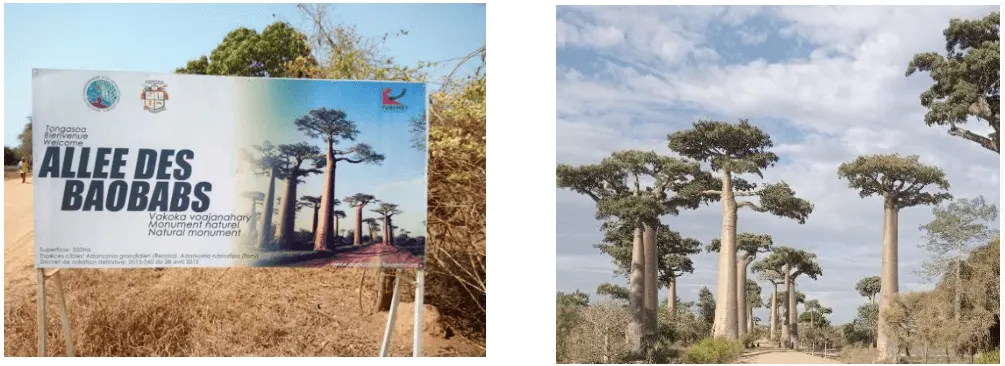
Baobab Alley, declared a “National Monument” by the IUCN
History of the Baobab Alley Protected Area
Madagascar is an island country that is home to a wide range of flora and fauna – 80% of which can be found nowhere else on earth. Due to its incredible biodiversity, the government established a Baobab Alley Protected Area in 2003, with the intention to triple its size by 2012. The Baobab Alley or Fokontany of Bekonazy (in Malagasy) or Allée des Baobabs (in French) was granted temporary protection in 2007 and was officially declared a protected area on July 23, 2015, following Decree No. 2015-761. This majestic area lies in the Menabe Region which is located 20 km north of Morondava.
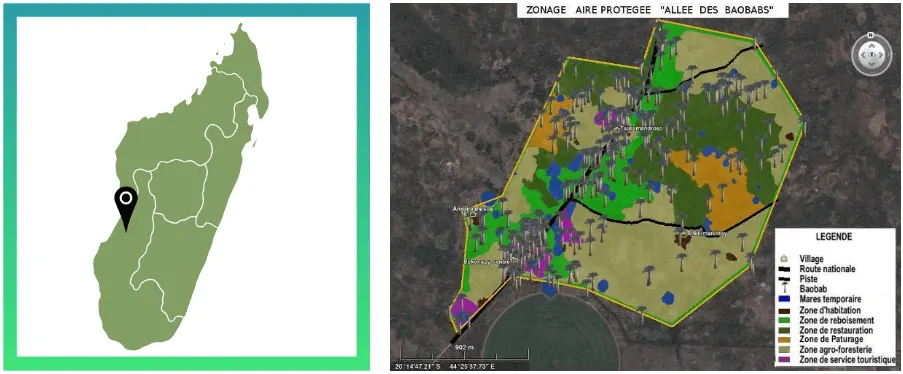
Location and Detailed Map of Baobab Alley Protected Area
Did You Know? The Baobabs are Endangered
The Giant Baobabs (Adansonia grandidieri) in Baobab Alley are endemic to Madagascar and are considered threatened on the International Union for Conservation of Nature’s (IUCN) Red List of Threatened Species.
In 2007, the IUCN classified Baobab Alley as a “Natural Monument” to help preserve the three species of baobab trees. Fanamby Organization has been protecting baobab trees through initiatives to diminish the threats against these beautiful trees.
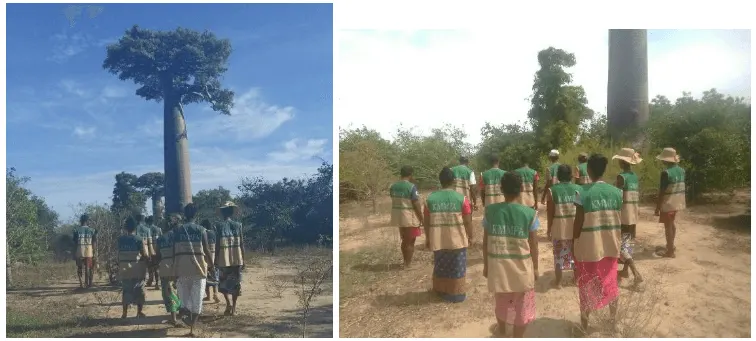
Fanamby Aims to Uplift Communities and Preserve Baobab Trees
Fanamby is devoted to protecting baobab trees while at the same time empowering and assisting the community surrounding Baobab Alley, also known as Bekonazy Fokontany. They focus on three goals to achieve both nature preservation and socioeconomic benefits for the community.

Goal 1: Community Patrols in Baobab Alley
Before 2020, an organization called the Fitarihantsoa Association was responsible for monitoring these protected areas. They identified several man-made threats to the baobabs such as cutting them, graffiti or stripping their bark, and illegal wildfires or crop fires.
In 2020, the President of Fokontany Bekonazy decided that six men from three villages would take part in community patrols. These patrols started in 2021 and have proven incredibly successful, leading to a 60-80% decrease in these man-made threats.
In January of 2023, Fanamby successfully recruited a total of twelve rangers (six women and six men) to increase the baobab patrol to 24 days per month per volunteer.
These community patrol members, called KMMFA, help to:
(1) Monitor and Observe Protected Areas,
(2) Raise awareness and mobilize villages and neighboring communities
(3) Count and provide information to daily visitors
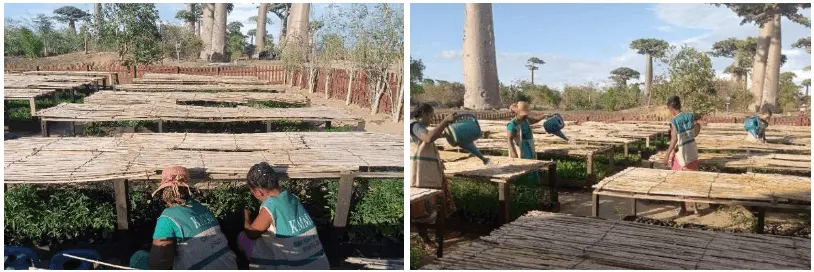
Goal 2: Restoring and Reforesting the Protected Area
In 2019, Madagascar’s Ministry of the Environment and Sustainable Development began an environmental initiative to help restore and reforest its Protected Areas annually. Fanamby Organization has a proven track record of supporting nature conservation since 2018. Below is a timeline of their reforestation successes.
Reforestation Project Successes:
2018-2019: Restored 2 hectares of 410 young plants with 16% success rate
2019-2020: Restored 15.2 hectares of 19,200 young plants with 15.63% success rate
2020-2021: Restored 12 hectares of 12,200 young plants with 16% success rate
2021-2022: Restored 18 hectares with 18,000 young plants and 84.41% success.
This incredible success rate is directly due to the involvement of hiring additional women rangers to the baobab patrol committee.
Now in 2023, Fanamby is planting 10,755 young plants on 20 hectares of land. Women for Conservation, through donor support, have provided them funding for the establishment of permanent nurseries. These three new nurseries contribute directly to restoring and reforesting the Baobab Alley Protected Area.
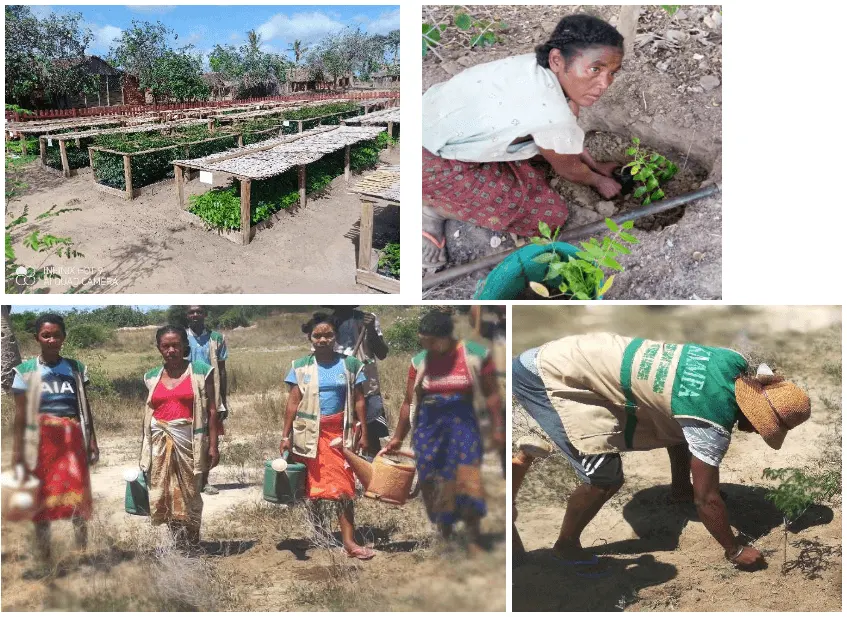
Goal 3: Community Development through Sustainable Livelihoods
Lastly, the Fanamby Organization is also engaged in income-generating activities such as allocating rice farms, designating land for cultivation, setting up private nurseries, and establishing ecotourism initiatives. These ecotourism activities have been incredibly successful such as selling artisanal crafts, employing 19 local community members in the restaurant, and generating income with parking fees. They have also established an ecotourism business of training tourists to replant trees from the nursery, which generates income to support locals and the tree nursery. Fanamby’s long-term goals include identifying more ways to uplift the local community financially through the preservation of the baobabs.


